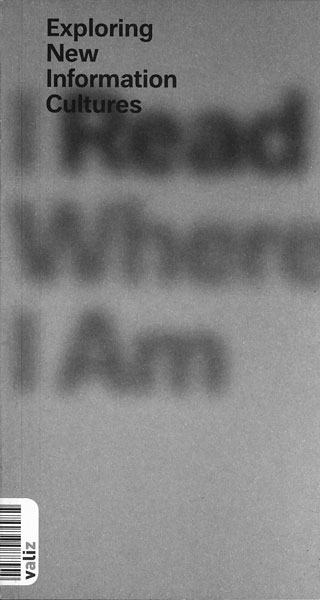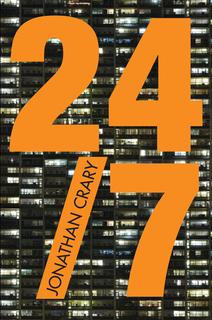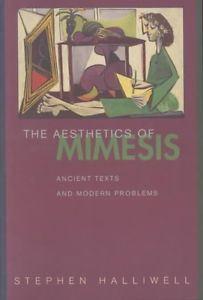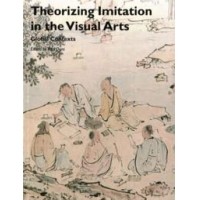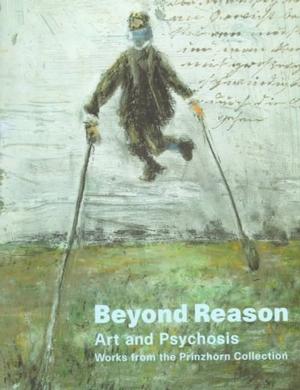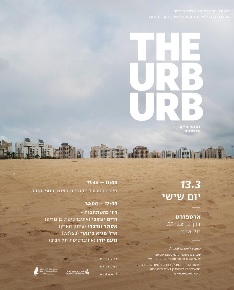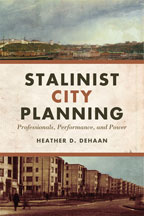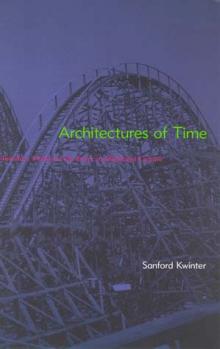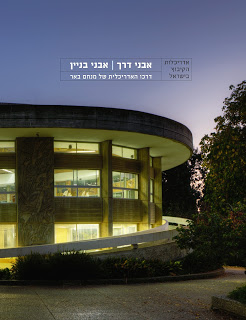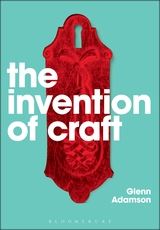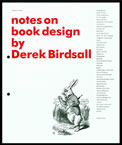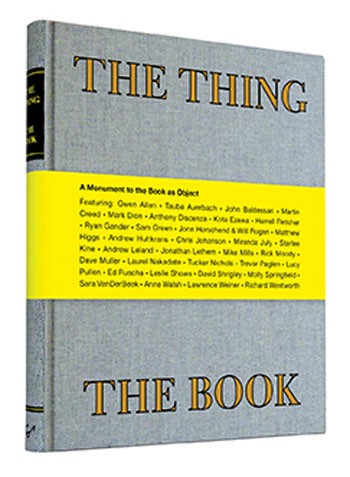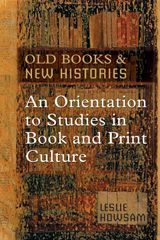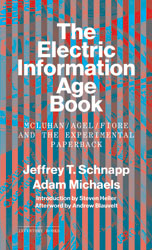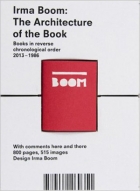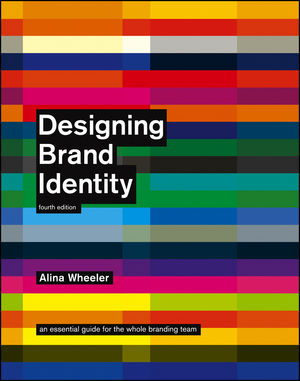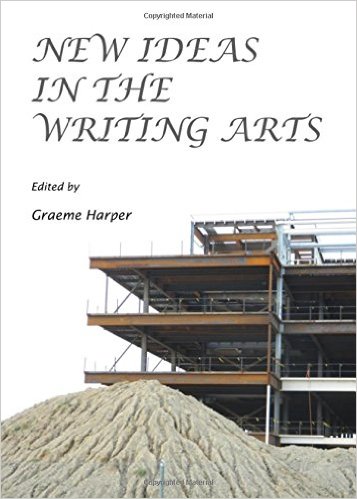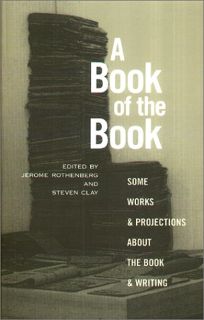עוד בפרק זה:
אפריל 2016
הספרייה מציעה לקוראיה מידי חודש רשימת ספרים וכתבי-עת חדשים שנוספו לאוספיה כל רשומה מכילה: מס' מיון, מחבר, כותר, מוציא לאור, שנת הוצאה , נושאים ומס' מערכת. לפרטים נוספים של הספר יש ללחוץ על תמונת העטיפה. כדי לראות מצב ההשאלות יש ללחוץ על כותר.
|
|
Amherst : University of Massachusetts Press, [2012]
Contents Zines then and now : what are they? what do you do with them? how do they work? / Janice Radway -- Have mouse, will travel : consuming and creating Chinese popular literature on the Web / Jin Feng -- Online literary communities : a case study of LibraryThing / Julian Pinder -- Building a national culture of reading in the "new" South Africa / Molly Abel Travis -- Literary taste and list culture in a time of "endless choice" / David Wright -- "Keepin’ it real" : incarcerated women’s readings of African American urban fiction / Megan Sweeney -- Producing meaning through interaction : book groups and the social context of reading / Joan Bessman Taylor -- Genre in the marketplace : the scene of bookselling in Canada / Julie Rak -- New literary cultures : mapping the digital networks of Toni Morrison / Ed Finn -- Confounding the literary : temporal problems in hypertext / David S. Miall -- Reading the reading experience : an ethnomethodological approach to "booktalk" / Daniel Allington and Bethan Benwell -- Mixing it up : using mixed methods research to investigate contemporary cultures of reading / Danielle Fuller and DeNel Rehberg Sedo.
Abstract The start of the twenty-first century has brought with it a rich variety of ways in which readers can connect with one another, access texts, and make sense of what they are reading. At the same time, new technologies have also opened up exciting possibilities for scholars of reading and reception in offering them unprecedented amounts of data on reading practices, book buying patterns, and book collecting habits. In From Codex to Hypertext, scholars from multiple disciplines engage with both of these strands. This volume includes essays that consider how changes such as the mounting ubiquity of digital technology and the globalization of structures of publication and book distribution are shaping the way readers participate in the encoding and decoding of textual meaning. Contributors also examine how and why reading communities cohere in a range of contexts, including prisons, book clubs, networks of zinesters, state-funded programs designed to promote active citizenship, and online spaces devoted to sharing one’s tastes in books.
As concerns circulate in the media about the ways that reading―for so long anchored in print culture and the codex―is at risk of being irrevocably altered by technological shifts, this book insists on the importance of tracing the historical continuities that emerge between these reading practices and those of previous eras. In addition to the volume editor, contributors include Daniel Allington, Bethan Benwell, Jin Feng, Ed Finn, Danielle Fuller, David S. Miall, Julian Pinder, Janice Radway, Julie Rak, DeNel Rehberg Sedo, Megan Sweeney, Joan Bessman Taylor, Molly Abel Travis, and David Wright. Subject Books and reading
Reading interests. Books and reading -- Technological innovations. Book industries and trade -- Technological innovations. Electronic publishing 40004 |
|
|
Breda : Graphic Design Museum ; Amsterdam : Valiz, [2011]
Abstract When Guy Debord identified the image consumerism of "the society of the spectacle" in the 1960s, he could not have forecast that language would threaten to eclipse the image in the medium of personal technology, creating a world of ubiquitous legibility. Today, we read anytime and anywhere, on screens of all sizes; we read not only newspaper articles, but also databases, online archives, search engine results and navigational structures. We read while out on the street, at home or in the office, with a complete library to hand--but less and less we read a book at home on the couch. In other words, we are, or are becoming, a different kind of reader. I Read Where I Am contains visionary texts about the future of reading and the status of the word in the digital age from designers, philosophers, journalists and politicians, looking at both sides of the argument for printed and digital reading matter.
Subject Reading -- Social aspects.
Books and reading -- Social aspects. Information technology -- Social aspects. Information display systems Human information processing. 40005 |
|
|
327(4) APP Applebaum , Anne New York : Anchor Books, a division of Random House, Inc., 2013
Contents Zero Hour -- Victors -- Communists -- Policemen -- Violence -- Ethnic Cleansing -- Youth -- Radio -- Politics -- Economics -- Enemies: Religion -- Enemies: Inside and Outside the Party -- Homo Sovieticus -- Socialist Realism -- Ideal Cities -- Collaborators...and Reluctant Sympathizers -- Passive Opponents -- Revolutions -- Epilogue.
Abstract In the follow-up to her previous book "Gulag," the author, a journalist, delivers a history of how Communism took over Eastern Europe after World War II and transformed in frightening fashion the individuals who came under its sway. At the end of World War II, the Soviet Union, to its surprise and delight, found itself in control of a huge swath of territory in Eastern Europe. Josef Stalin and his secret police set out to convert a dozen radically different countries to Communism, a completely new political and moral system. In this book, the author describes how the Communist regimes of Eastern Europe were created and what daily life was like once they were complete. She draws on newly opened East European archives, interviews, and personal accounts translated for the first time to portray in detail the dilemmas faced by millions of individuals trying to adjust to a way of life that challenged their every belief and took away everything they had accumulated. Today the Soviet Bloc is a lost civilization, one whose cruelty, paranoia, bizarre morality, and strange aesthetics is captured in the pages of this book.
Subject Europe, Eastern -- Relations -- Soviet Union.
Soviet Union -- Relations -- Europe, Eastern. Europe, Eastern -- Politics and government -- 1945-1989 Europe, Eastern -- Social conditions -- 20th century. Communist countries -- Politics and government Communist countries -- Social conditions Communism -- Europe, Eastern -- History -- 20th century. Communism -- Social aspects -- Europe, Eastern -- History -- 20th century. Political culture -- Europe, Eastern -- History -- 20th century. Political persecution -- Europe, Eastern -- History -- 20th century. 40050 |
|
|
513.73 NAK Nakahara, Mikio Geometry, Differential.
Topology Mathematical physics 40035 |
|
|
658 WES Weske, Mathias languages, architectures / Second edition
Production, Heidelberg ; New York : Springer, 2012 Contents Part 1. Foundation. Introduction -- Evolution of enterprise systems architectures -- part 2. Business process modelling -- Business process modelling foundation -- Process orchestrations -- Process choreographies --Properties of business processes -- part 3. Architectures and methodologies -- Business process management architectures -- Business process management methodology.
Abstract Business process management is usually treated from two different perspectives: business administration and computer science. While business administration professionals tend to consider information technology as a subordinate aspect in business process management for experts to handle, by contrast computer science professionals often consider business goals and organizational regulations as terms that do not deserve much thought but require the appropriate level of abstraction. Mathias Weske argues that all communities involved need to have a common understanding of the different aspects of business process management. To this end, he details the complete business process lifecycle from the modeling phase to process enactment and improvement, taking into account all different stakeholders involved. After starting with a presentation of general foundations and abstraction models, he explains concepts like process orchestrations and choreographies, as well as process properties and data dependencies. Finally, he presents both traditional and advanced business process management architectures, covering, for example, workflow management systems, service-oriented architectures, and data-driven approaches. In addition, he shows how standards like WfMC, SOAP, WSDL, and BPEL fit into the picture. This textbook is ideally suited for classes on business process management, information systems architecture, and workflow management. This 2nd edition contains major updates on BPMN Version 2 process orchestration and process choreographies, and the chapter on BPM methodologies has been completely rewritten. The accompanying website www.bpm-book.com contains further information and additional teaching material.
Subject Industrial management
Management information systems Workflow -- Management. Reengineering (Management) Organizational change Organizational effectiveness. Business -- Data processing. Business -- Data processing -- Management. 40030 |
|
|
658.51 GOT Gothelf, Jeff Sebastopol, CA : O’Reilly Media, [2013]
Contents Introduction and principles. Why Lean UX? -- Principles -- Process. Vision, framing, and outcomes -- Collaborative design -- MVPs and experiments -- Feedback and research -- Integrating Lean UX and Agile -- Making organizational shifts.
Abstract The Lean UX approach to interaction design is tailor-made for today’s web-driven reality. In this insightful book, leading advocate Jeff Gothelf teaches you valuable Lean UX principles, tactics, and techniques from the ground up—how to rapidly experiment with design ideas, validate them with real users, and continually adjust your design based on what you learn. Inspired by Lean and Agile development theories, Lean UX lets you focus on the actual experience being designed, rather than deliverables. This book shows you how to collaborate closely with other members of the product team, and gather feedback early and often. You’ll learn how to drive the design in short, iterative cycles to assess what works best for the business and the user. Lean UX shows you how to make this change—for the better. •Frame a vision of the problem you’re solving and focus your team on the right outcomes •Bring the designers’ toolkit to the rest of your product team •Share your insights with your team much earlier in the process •Create Minimum Viable Products to determine which ideas are valid •Incorporate the voice of the customer throughout the project cycle •Make your team more productive: combine Lean UX with Agile’s Scrum framework •Understand the organizational shifts necessary to integrate Lean UX Lean UX received the 2013 Jolt Award from Dr. Dobb’s Journal as the best book of the year. The publication’s panel of judges chose five notable books, published during a 12-month period ending June 30, that every serious programmer should read.
Subject Product management
Consumer satisfaction User-centered system design New products Human-computer interaction 39979 |
|
|
7.01 BUR Burwick, Frederick University Park, Pa. : Pennsylvania State University, 2007
Abstract In Romantic theories of art and literature, the notion of mimesis—defined as art’s reflection of the external world—became introspective and self-reflexive as poets and artists sought to represent the act of creativity itself. Frederick Burwick seeks to elucidate this Romantic aesthetic, first by offering an understanding of key Romantic mimetic concepts and then by analyzing manifestations of the mimetic process in literary works of the period. Burwick explores the mimetic concepts of "art for art’s sake," "Idem et Alter," and "palingenesis of mind as art" by drawing on the theories of Philo of Alexandria, Aristotle, Immanuel Kant, Friedrich Schiller, Friederich Wilhelm Joseph von Schelling, Thomas De Quincey, and Germaine de Staël. Having established the philosophical bases of these
Subject Mimesis in literature
Romanticism. 40055 |
|
|
7.01 CRA Crary, Jonathan 24/7 : late capitalism and the ends of sleep
London ; New York : Verso, 2014
Subject Art and society
Time and art. Capitalism -- Social aspects. Civilization, Modern -- 21st century. 40034 |
|
|
7.01 GEB Gunter Gebauer, Christoph Wulf Mimesis : culture, art, society Berkeley, Calif. : University of California Press , 1995
Contents Point of departure -- Part I : Mimesis as imitation, the production of appearances, and fiction. On the origins of the concept ; Imitation, illusion, image (Plato) ; The break in the history of mimesis : the use of writing ; Poetic mimesis (Aristotle) -- Part II : Mimesis as imitatio, the expression of power, and literate subjectivity. Mimesis as imitation ; Poetics and power in the Renaissance ; Intertextuality, fragmentation, desire : Erasmus, Montaigne, Shakespeare -- Part III : Mimesis as enactment of the state. The conflict over history : the querelle des anciens et des modernes ; Mimesis as the self-representation of political power ; Against mimesis as self-representation -- Part IV : From imitation to the constitution of the creative subject. Problems in the imitation of nature in the eighteenth century ; Mimesis in the theater of the Enlightenment ; Diderot’s Paradox of acting ; The transformation of Mimesis in Lessing ; Self-mimesis (Rousseau) -- Part V : Mimesis as the principle of worldmaking in the novel and society. The mimetic constitution of social reality ; "Mimetic desire" in the work of Girard ; Violence in antiromantic literature ; The mimesis of violence (Girard) -- Part VI : Mimesis as entrée to the world, language, and writing. Nonsensuous similarity : on linguistic anthropology of Benjamin ; Vital experience (Adorno) ; The between-character of mimesis (Derrida) -- Results.
Abstract Mimesis, the notion that art imitates reality, has long been recognized as one of the central ideas of Western aesthetics and has been most frequently associated with Aristotle. Less well documented is the great importance of mimetic theories of literature, theater, and the visual arts during the Renaissance and the Enlightenment. In this book, the most comprehensive overview of the theory of mimesis since Auerbach’s monumental study, Gunter Gebauer and Christoph Wulf provide a thorough introduction to the complex and shifting meanings of the term. Beginning with the Platonic doctrine of imitation, they chart the concept’s appropriation and significance in the aesthetic theories of Aristotle, Molière, Shakespeare, Racine, Diderot, Lessing, and Rousseau. They examine the status of mimesis in the nineteenth-century novel and its reworking by such modern thinkers as Benjamin, Adorno, and Derrida. Widening the traditional understanding of mimesis to encompass the body and cultural practices of everyday life, their work suggests the continuing value of mimetic theory and will prove essential reading for scholars and students of literature, theater, and the visual arts.
Subject Mimesis.
Mimesis in literature Literature -- Aesthetics. Aesthetics, Modern -- 20th century. 40060 |
|
|
7.01 HAL Halliwell, Stephen Princeton, N.J. : Princeton University Press, 2002
Contents Introduction : mimesis and the history of aesthetics -- Representation and reality : Plato and mimesis -- Romantic Puritanism : Plato and the psychology of mimesis -- Mimesis and the best life : Plato’s repudiation of the tragic -- More than meets the eye : looking into Plato’s mirror -- Inside and outside the work of art : Aristotelian mimesis reevaluated -- The rewards of mimesis : pleasure, understanding, and emotion in Aristotle’s Aesthetics -- Tragic pity : Aristotle and beyond -- Music and the limits of mimesis : Aristotle versus Philodemus -- Truth or delusion? The mimeticist legacy in Hellenistic philosophy -- Images of life : mimesis and literary criticism after Aristotle -- Renewal and transformation : Neoplatonism and mimesis -- An inheritance contested : Renaissance to modernity.
Abstract Mimesis is one of the oldest, most fundamental concepts in Western aesthetics. This book offers a new, searching treatment of its long history at the center of theories of representational art: above all, in the highly influential writings of Plato and Aristotle, but also in later Greco-Roman philosophy and criticism, and subsequently in many areas of aesthetic controversy from the Renaissance to the twentieth century. Combining classical scholarship, philosophical analysis, and the history of ideas--and ranging across discussion of poetry, painting, and music--Stephen Halliwell shows with a wealth of detail how mimesis, at all stages of its evolution, has been a more complex, variable concept than its conventional translation of "imitation" can now convey. Far from providing a static model of artistic representation, mimesis has generated many different models of art, encompassing a spectrum of positions from realism to idealism. Under the influence of Platonist and Aristotelian paradigms, mimesis has been a crux of debate between proponents of what Halliwell calls "world-reflecting" and "world-simulating" theories of representation in both the visual and musico-poetic arts. This debate is about not only the fraught relationship between art and reality but also the psychology and ethics of how we experience and are affected by mimetic art.
Subject Aesthetics -- History.
Mimesis in art 40056 |
|
|
7.01 THE Theorizing imitation in the visual arts : global contexts Chichester, West Sussex, UK : Wiley-Blackwell, 2015
Contents Why Imitation, and Why Global? / Paul Duro -- Post-Western Poetics : Postmodern Appropriation Art in Australia / Ian McLean -- Essentially the Same : Eduardo Costa’s Minimal Differences and Latin American Conceptualism / Patrick Greaney -- Like Father, Like Son : Bernini’s Filial Imitation of Michelangelo / Carolina Mangone -- Navajo Sandpainting in the Age of Cross-Cultural Replication / Janet Catherine Berlo -- Copying and Theory in Edo-Period Japan (1615-1868) / Kazuko Kameda-Madar -- Original Imitations for Sale : Dafen and Artistic Commodification / Vivian Li -- The Temporal Logic of Citation in Chinese Painting / Martin J. Powers -- Ingemination / Richard Shiff -- The Image Valued ’As Found’ and the Reconfi guring of Mimesis in Postwar Art / Alex Potts -- History Lessons : Imitation, Work and the Temporality of Contemporary Art / Jonathan Bordo.
Abstract The theory and practice of imitation has long been central to the construction of art and yet imitation is still frequently confused with copying. "Theorizing Imitation in the Visual Arts "challenges this prejudice by revealing the ubiquity of the practice across cultures and geographical borders. This fascinating collection of original essays has been compiled by a group of leading scholars Challenges the prejudice of imitation in art by bringing to bear a perspective that reveals the ubiquity of the practice of imitation across cultural and geographical borders Brings light to a broad range of areas, some of which have been little researched in the past
Subject Mimesis in art
Art -- History. 40059 |
|
|
7.037 DWO Dworkin, Craig Cambridge, Massachusetts : MIT Press, [2015]
Abstract In No Medium, Craig Dworkin looks at works that are blank, erased, clear, or silent, writing critically and substantively about works for which there would seem to be not only nothing to see but nothing to say. Examined closely, these ostensibly contentless works of art, literature, and music point to a new understanding of media and the limits of the artistic object. Dworkin considers works predicated on blank sheets of paper, from a fictional collection of poems in Jean Cocteau’s Orphée to the actual publication of a ream of typing paper as a book of poetry; he compares Robert Rauschenberg’s Erased De Kooning Drawing to the artist Nick Thurston’s erased copy of Maurice Blanchot’s The Space of Literature (in which only Thurston’s marginalia were visible); and he scrutinizes the sexual politics of photographic representation and the implications of obscured or obliterated subjects of photographs. Reexamining the famous case of John Cage’s 4’33", Dworkin links Cage’s composition to Rauschenberg’s White Paintings, Ken Friedman’s Zen for Record (and Nam June Paik’s Zen for Film), and other works, offering also a "guide to further listening" that surveys more than 100 scores and recordings of "silent" music. Dworkin argues that we should understand media not as blank, base things but as social events, and that there is no medium, understood in isolation, but only and always a plurality of media: interpretive activities taking place in socially inscribed space.
Subject Arts, Modern -- 20th century -- Themes, motives.
Nothing (Philosophy) in art. Arts -- Experimental methods -- History -- 20th century. 40014 |
|
|
San Francisco : Chronicle Books, 2013
Contents Eva Zeisel : Design Legend 1906-2011 / by Pat Kirkham -- Design and Commissions 1928-2011 -- Select Chronology -- Contributors.
Abstract Eva Zeisel was one of the twentieth century’s most influential ceramicists and designers of modern housewares. Her distinctive take on modern industrial design was inspired by organic form and brought beauty and playfulness to housewares, earning her designs a beloved place in midcentury homes. This richly illustrated volume—the first-ever complete biographical account of Zeisel’s life and work—presents an extensive survey of every line she ever created, all captured in gorgeous new photography, plus 28 short essays from scholars, collectors, curators, and designers. The definitive book on the grande dame of twentieth-century ceramics, this is an essential resource for anyone who appreciates modern design.
Per.Sub. Zeisel, Eva, 1906-2011 -- Themes, motives.
Subject Design -- United States -- History -- 20th century.
40053 |
|
|
7.052 MIL Miller, J. Abbott. New York : Princeton Architectural Press, 2014
Contents Foreword / Rick Poynor -- Design and content / Abbott Miller -- The archaeology of college / Ellen Lupton -- Design is a mode of inquiry -- The only way to do it is to do it -- Design is a measure of energy -- A white cube is a black box -- Patterns create patterns from patterns -- A book is a movie you hold in your hands -- An exhibition is a room with a plot -- The story is the engine -- Identity links pixels and bricks -- The idea is the machine -- From object to observer -- Through thick and thin: fashion and type -- The elephant in the room / Michael Bierut, Abbott Miller, Eddie Opara, and Paula Scher.
Abstract "Open Book is the first monograph on the preeminent graphic designer Abbott Miller. Recipient of numerousdesign honors including the Chrysler Award for Innovation in Design, Miller is known for his pioneering graphic work as a partner at Pentagram, where he leads a team designing books, magazines, catalogs, identities, exhibitions, and creating editorial projects. His work is often concerned with the cultural role of design and the public life of the written word. Collaborating with performers, curators, artists, photographers, writers, publishers, corporations, and institutions, he has created a unique practice that crosses back and forth between the printed page and the physical space of exhibitions. In his work as a designer, editor, and writer he has pioneered the concept of the designer as author, and he has collaborated with artists such as Matthew Barney, Yoko Ono, Geoffrey Beene, Philip Glass, Twyla Tharp, and Nam June Paik, among many others. His clients include Vitra, Knoll, Harley-Davidson, and Steuben, as well as many museums and publishers.Miller presents his work as a catalog of design strategies, emerging from the unique circumstances of form and content. In four chapters "Books," "Exhibitions," "Magazines," and "Identity"Open Book provides insight into Miller’s working process and showcases all of his best designs. Miller talks freely about influences on his practice, his ideas, his experiences working with curators, artists, and clients, as well as the lessons hes learned. A foreword by Ellen Lupton situates his work in the context of contemporary design. Open Book, beautifully produced and illustrated with more than four hundred images, is a must-have for anyone interested in design and the visual arts"-- Provided by publisher.
Abbott Miller: Design and Content is the first monograph on the award-winning graphic designer known for his innovative work at Pentagram, where as a partner he leads a team designing books, magazines, catalogs, identities, exhibitions, and editorial projects, creating work that is often concerned with the cultural role of design and the public life of the written word. Collaborating with performers, curators, artists, photographers, writers, publishers, corporations, and institutions, Miller has created a unique practice that alternates between the printed page and the physical space of exhibitions. In his work as an editor and writer he pioneered the concept of designer-as-author, both roles he assumes for this beautifully produced and lavishly illustrated edition. Miller presents his work as a catalog of design strategies, emerging from the unique circumstances of form and content. Four categories—books, exhibitions, magazines, and identity—provide insight into Miller’s influences and working process while also showcasing his best designs. Per.Sub. Miller, J. Abbott -- Themes, motives.
Subject Design
Graphic arts Graphic arts -- Themes, motives. Graphic artists 40003 |
|
|
London : Hayward Gallery, 1996.
Per.Sub. Prinzhorn, Hans, 1886-1933 -- Art collections -- Exhibitions
Subject Collectors and collecting -- Exhibitions.
Mental illness Art and mental illness -- Europe Artists with mental disabilities -- Europe 40062 |
|
|
[ישראל] שטרנטל ספרים [2014]
Subject City planning -- Israel.
Urban renewal -- Israel. Cities and towns -- Israel. Suburban life -- Israel Housing -- Israel -- Planning Architecture, Modern -- Israel Short stories, Hebrew -- 21st century 40063 |
|
|
711.43(47) DEH DeHaan, Heather D performance, and power / Third revised edition
Toronto ; Buffalo ; London : University of Toronto Press, [2013] Contents Introduction : planners, performance, and power -- From Nizhnii to Gorky : setting the stage of socialism -- Visionary planning : confronting socio-material agencies -- From ivory tower to city street : building a new Nizhnii Novgorod, 1928-1935 -- Stalinist representation : iconographic vision, 1935-1938 -- Stalinism as stagecraft : the architecture of performance -- A city that builds itself : the limits of technocracy -- Performing socialism : connecting space to self -- Conclusion : living socialism in the shadow of the political.
Abstract Based on research in previously closed Soviet archives, this book sheds light on the formative years of Soviet city planning and on state efforts to consolidate power through cityscape design. Stepping away from Moscow’s central corridors of power, Heather D. DeHaan focuses her study on 1930s Nizhnii Novgorod, where planners struggled to accommodate the expectations of a Stalinizing state without sacrificing professional authority and power. Bridging institutional and cultural history, the book brings together a variety of elements of socialism as enacted by planners on a competitive urban stage, such as scientific debate, the crafting of symbolic landscapes, and state campaigns for the development of cultured cities and people. By examining how planners and other urban inhabitants experienced, lived, and struggled with socialism and Stalinism, DeHaan offers readers a much broader, more complex picture of planning and planners than has been revealed to date.
Per.Sub. Stalin, Joseph, 1878-1953 -- Influence
Subject City planning -- Soviet Union -- History -- 20th century.
City planning -- Political aspects -- Soviet Union -- History City planners -- Soviet Union -- History -- 20th century. Architecture -- Political aspects -- Soviet Union -- History -- 20th century. 40052 |
|
|
711.47(569.4) DOL Dolev, Diana Lanham, Maryland : Lexington Books, 2016
Contents Jerusalem and the Mount Scopus site -- Patrick Geddes and Frank Mears : the first master-plan, 1919-1920 -- Fritz Kornberg : necessary necessary beginnings, 1923-1925 -- Frank Mears and Benjamin Chaikin : first three new buildings, 1926-1929 -- Julian Clarence Levi : the donor’s vision for the Jewish studies building, 1929 -- Benjamin Chaikin : the neoclassic open-air theater, 1933 -- Erich Mendelsohn : secular spirituality, 1934-1941 -- Carl Rubin and Jacob Jawicz : the Museum of Jewish Antiquities, 1941 -- Joseph Douglas Weiss : the completion of the Jewish studies building, 1936-1940 -- Richard Kauffmann : the university city, 1944-1948.
Abstract Since the construction of the first Holy Temple on Mount Moriah in Jerusalem in 957 BCE, the site became one of the holiest places for Jews, Christians, and Muslims around the world. Once the Dome of the Rock was built during early Islam, the edifice replaced the temple and for centuries pilgrims, travelers, and locals would climb up to the Mount Scopus summit for the magnificent view it afforded. Hence, planning and building an institute of national importance on Mount Scopus could not disregard the implications of that view of the Temple Mount—in terms of beauty, religious sentiments, and the link to a historic golden age. The Planning and Building of the Hebrew University, 1919–1948: Facing the Temple Mount traces, for the first time, the history of the construction of this highly significant Zionist enterprise. It follows the years of the British Mandate rule over Palestine, bookended between the Ottoman Empire government and Israel’s independence—an era of great changes in the area, Jerusalem in particular. In the three decades between 1919 and 1948, five different master plans were drawn up for the university, though none of them were fully implemented. Only seven buildings were designed and fully completed. Each plan and building presented an interpretation of a university conception that also related to prevailing styles and ideological trends. Underlying each one were intricate power struggles, donors’ wishes, and architectural concerns. Internationally famous town-planners and architects such as Patrick Geddes and Erich Mendelsohn took part in designing the campus. The book also reveals comparatively unknown architects and their contribution to the campus.
Corp.Sub. Universitah ha-ʻIvrit bi-Yerushalayim -- Buildings.
Universitah ha-ʻIvrit bi-Yerushalayim -- History. Subject Universities and colleges -- Israel.
39975 |
|
|
72 JAC Jacobus, Frank London : Laurence King Publishing, 2015
Abstract This informative and engaging book uses a variety of inventive infographics to take an unusual look at architecture in a way that would not be possible with words and images alone. Through a variety of different infographics it compares, for example, the range of materials and colours used by different architects, the relative locations of their buildings, who influenced who, and which architects are the most discussed. It also approaches architecture from more unconventional angles with spreads that show the kinds of architecture favoured by dictators, the networks of love affairs that architects got entangled in; the defining facial features of famous architects and so on. Irreverent and entertaining, this book will appeal to all those with an interest in architecture or infographics.
Subject Architecture
Architecture -- Charts, diagrams, etc. Architecture -- Miscellanea. Architectural design Architectural drawing 40051 |
|
|
72.036 KWI Kwinter, Sanford Cambridge, Massachusetts : MIT Press, 2002
Contents Machine generated contents note: Acknowledgments -- 1 The Complex and the Singular -- 2 Modernist Space and the Fragment -- 3 Physical Theory and Modernity: Einstein, Boccioni, Sant’Elia -- 4 Real Virtuality, or "the Kafkaesque -- 5 Kafkan Immanence -- 6 Conclusion.
Abstract In Architectures of Time, Sanford Kwinter offers a critical guide to the modern history of time and to the interplay between the physical sciences and the arts. Tracing the transformation of twentieth-century epistemology to the rise of thermodynamics and statistical mechanics, Kwinter explains how the demise of the concept of absolute time, and of the classical notion of space as a fixed background against which things occur, led to field theory and a physics of the "event." He suggests that the closed, controlled, and mechanical world of physics gave way to the approximate, active, and qualitative world of biology as a model of both scientific and metaphysical explanation. Kwinter examines theory of time and space in Einstein’s theories of relativity and shows how these ideas were reflected in the writings of the sculptor Umberto Boccioni, the town planning schema of the Futurist architect Antonio Sant’Elia, the philosophy of Henri Bergson, and the writings of Franz Kafka. He argues that the writings of Boccioni and the visionary architecture of Sant’Elia represent the earliest and most profound deployments of the concepts of field and event. In discussing Kafka’s work, he moves away from the thermodynamic model in favor of the closely related one of Bergsonian duree, or virtuality. He argues that Kafka’s work manifests a coherent cosmology that can be understood only in relation to the constant temporal flux that underlies it.
Subject Modern movement (Architecture)
40049 |
|
|
גבעת חביבה : יד יערי, תשע"ה 2015
Contents אבני דרך ומשפחה / מוקי צור -- אדריכל האור הישראלי / יובל דניאלי -- אבני דרך בתכנון הקיבוץ / מוקי צור -- אדריכלות על פי מנחם באר / דני לזר -- להתרומם כדי לקבל פרספקטיבה / דליה בר-אמוץ -- בגעתון / מנחם באר -- בונים קיבוץ ולא רק...: חדר אוכל ; מועדון לחבר ; אולם מופעים וספורט ; ברכת שחייה ; שכונת מגורים ; מבנה חינוך ; מכללה ; ספרייה -- על שיתוף פעולה בין אדריכלות לאמנות / משה סעידי -- אריכיטקט חבר קיבוץ / מנחם באר -- רשימה נבחרת של פרויקטים -- אנגלית
Abstract מנחם באר, שיצירתו פרושה בספר זה, שייך לדור הארכיטקטים השלישי, שלא כמו קודמיהם, חברי קיבוצים כולם. הערך המוסף שלהם היה שהם הביאו אל מלאכת התכנון גם את ניסיון החיים האינטימי שלהם עם הקיבוץ בלא שיאבדו את תודעת החזון המובהקת של קודמיהם ... מני היה אדריכל רב-תחומי: מבני תעשייה, מגורים, מוסדות חינוך, מוסדות ציבור, בנייה פרטית, בנייה ציבורית ועוד. עבודותיו פזורות ברחבי הארץ וגם בקיבוצו - געתון
Per.Sub. Beer, Menachem, 1925-
Subject Architects -- Israel.
Architecture -- Israel. Kibbutzim -- Buildings. 39943 |
|
|
London : Bloomsbury, 2013
Contents Manipulation -- Mystery -- Mechanical -- Memory.
Abstract Glenn Adamson’s last book, Thinking Through Craft, offered an influential account of craft’s position within modern and contemporary art. Now, in his engaging sequel, The Invention of Craft, his theoretical discussion of skilled work is extended back in time and across numerous disciplines. Adamson searches out the origins of modern craft, locating its emergence in the period of the industrial revolution. He demonstrates how craft was invented as industry’s ’other’, a necessary counterpart to ideas of progress and upheaval. In the process, the magical and secretive culture of artisans was gradually dominated through division and explication. This left craft with an oppositional stance, a traditional or anti-modern position. The Invention of Craft ranges widely across media, from lock-making, wood-carving and iron-casting to fashion, architecture and design. It also moves back and forth between periods, from the 18th century to the present day, demonstrating how contemporary practice can be informed through the study of modern craft in its moment of invention.-- Provided by publisher.
Subject Handicraft -- History.
Industrial arts -- History. Workmanship -- History. 40054 |
|
|
London ; New York, NY : Routledge, 2013
Contents Introduction -- Marked surfaces -- Steam intellects -- Lithography and "improper" printing -- Grey scale : half tone printing and the age of photomechanical reproduction -- Found objects : copyshop culture -- Conclusion : post-print culture.
Abstract With the advent of new digital communication technologies, the end of print culture once again appears to be as inevitable to some recent commentators as it did to Marshall McLuhan. And just as print culture has so often been linked with the rise of modern industrial society, so the alleged demise of print under the onslaught of new media is often also correlated with the demise of modernity. This book charts the elements involved in such claims―print, culture, technology, history―through a method that examines the iconography of materials, marks and processes of print, and in this sense acknowledges McLuhan’s notion of the medium as the bearer of meaning. Even in the digital age, many diverse forms of print continue to circulate and gain meaning from their material expression and their history. However, Frances Robertson argues that print culture can only be understood as a constellation of diverse practices and therefore discusses a range of print cultures from 1800 the present ‘post-print’ culture. The book will be of interest to undergraduate and postgraduate students within the areas of cultural history, art and design history, book and print history, media studies, literary studies, and the history of technology.
Subject Printing -- History.
Printing -- Social aspects -- History. Graphic design (Typography) -- History. Communication and technology Digital media 40002 |
|
|
766:655.53 BIR Birdsall , Derek New Haven : Yale University Press, 2004
Contents The process of book design -- Book design in practice.
Abstract In a career spanning more than forty years, Derek Birdsall has achieved renown as a leading book designer in Britain. This practical and inspirational book distils a lifetime’s professional experience. It presents and discusses nearly fifty books he has designed, showing 360 spreads and covers, all in full color and to scale. The designs range from Penguin paperback covers in the 1960s to a recent complete redesign of The Church of England’s book of Common Worship. Among Birdsall’s projects are award-winning art catalogues, catalogues raisonné on such major artists as Mark Rothko and Georgia O’Keeffe, and books on wine, chess, astronomy, architecture, and fine paper. Birdsall discusses and illustrates the process of book design, from brief to deadline (which he calls the designer’s muse). He includes specimen settings of his favorite text faces as well as an innovative metric grid system for designing books. In addition, he lists books he himself has found useful or inspiring. For every reader curious about the design or production of books, this is a uniquely informative and instructive book.
Subject Book design
Illustration of books Book designers Graphic design (Typography) 39991 |
|
|
766:655.53 BOO The book on books on artists books / Second expanded edition London : Everyday Press, [2013] Abstract Arnaud Desjardin’s The Book on Books on Artists Books is a bibliography of books, pamphlets, dealer catalogues and other printed materials on artists’ books that takes stock of a wide variety of publications on artists’ books since the early 1970s to assess the historical documentation of distribution, circulation and reception in the field. Together, these materials constitute a unique history of the overlooked ephemera produced by the exhibiting, publishing, disseminating and collecting of artists’ books during the last 40 years. Desjardin’s criterion for inclusion was to include only informational material on artists’ books, rather than critical writing or theoretical texts. Consummately researched, with more than 600 entries, The Book on Books on Artists Books constitutes a groundbreaking bibliography that will prove essential for scholars, librarians and fans of artists’ books.
Subject Artists’ books -- Bibliography.
40013 |
|
|
Toronto ; Buffalo : University of Toronto Press, 2004
Contents Architectures, ideologies, and materials of the page / Peter Stoicheff and Andrew Taylor -- Turning the page / Alberto Manguel -- Decolonizing the medieval page / John Dagenais -- Back to the future -- littorally : annotating the historical page / William W.E. Slights -- Nicholas Jenson and the form of the Renaissance printed page / David R. Carlson -- Print culture and decolonizing the university : indigenizing the page : part 1 / Marie Battiste -- Print culture and decolonizing the university : indigenizing the page : part 2 / L.M. Findlay -- Visible and invisible books : hermetic images in n-dimensional space / Jerome McGann -- James Joyce’s Ulysses on the page and on the screen / Michael Groden -- Our bodies are not final / Edison del Canto -- Processual page : materiality and consciousness in print and hypertext / $r Joseph Tabbi -- Virtually human : the electronic page, the archived body, and human identity / $r Allison Muri -- Artist’s pages : decolonizing tactics in ’Writing space’ / Lynne Bell.
Abstract The Future of the Page is a collection of essays that presents the best of recent critical theory on the history and future of the page and its enormous influence on Western thought and culture. Spanning the centuries between the earliest record of the page and current computerized conceptions of page-like entities, the essays examine the size of the page, its relative dimensions, materials, design, and display of information." "The page is broadly defined, allowing the volume to explore topics ranging from medieval manuscripts to non-European alternatives to the page, Algonquian symbolic literacy, and hypertext. This thought-provoking collection will appeal to literacy scholars, book historians, graphic designers, and those interested in the impact of evolving print technologies on intellectual and cultural life."--Jacket.
The most basic unit of the physical book is the page. It has determined the historical evolution of the book, the types of information communicated, and how the audience accesses that information. Unique and rewarding in both its scope and approach, The Future of the Page is a collection of essays that presents the best of recent critical theory on the history and future of the page and its enormous influence on Western thought and culture. Spanning the centuries between the earliest record of the page and current computerized conceptions of page-like entities, the essays examine the size of the page, its relative dimensions, materials, design, and display of information. The page is broadly defined, allowing the volume to explore topics ranging from medieval manuscripts to non-European alternatives to the page, Algonquin symbolic literacy, and hypertext. This thought-provoking collection will appeal to literary scholars, book historians, graphic designers, and those interested in the impact of evolving print technologies on intellectual and cultural life. Subject Books -- Format -- History
Manuscript design -- History. Literacy -- History. Electronic books. 40000 |
|
|
San Francisco : Chronicle Books, [2014]
Abstract What exactly is a book? This wildly inventive and thought-provoking volume asks that question of more than 30 of today’s top creative visionaries, from Ed Ruscha to Miranda July, John Baldessari to Jonathan Lethem. Each traditional element of a book—from endpapers to footnotes—is assigned to a different artist or writer invited to use the space as a creative playground. The result is a collaborative group art project like no other. A ribbon bookmark by David Shrigley, page numbers by Tauba Auerbach, endnotes by Rick Moody—each contribution surprising and brilliant. This one-of-a-kind book will entrance anyone who appreciates art, literature, and the surprising possibilities that emerge when the two collide.
Subject Books.
Book industries and trade Authorship 40012 |
|
|
766:655.53 HOW Howsam, Leslie Toronto ; Buffalo : University of Toronto Press, 2006
Contents Disciplinary boundaries and interdisciplinary opportunities -- Mapping the interdisciplinarities -- Models of the book’s place in history -- Where is the book in history? -- Cross-disciplinary observations : the mutability of texts, print, and readings.
Abstract Studies in the culture and history of the book are a burgeoning academic specialty. Intriguing, rigorous, and vital, they are nevertheless rooted within three major academic disciplines - history, literary studies, and bibliography - that focus respectively upon the book as a cultural transaction, a literary text, and a material artefact. Old Books and New Histories serves as a guide to this rich but sometimes confusing territory, explaining how different scholarly approaches to what may appear to be the same entity can lead to divergent questions and contradictory answers. Rather than introduce the events and turning points in the history of book culture, or debates among its theorists, Leslie Howsam uses an array of books and articles to offer an orientation to the field in terms of disciplinary boundaries and interdisciplinary tensions. Howsam’s analysis maps studies of book and print culture onto the disciplinary structure of the North American and European academic world. Old Books and New Histories is also an engaged statement of the historical perspective of the book. In the final analysis, the lesson of studies in book and print culture is that texts change, books are mutable, and readers ultimately make of books what they need.
Subject Books -- History
40009 |
|
|
766:655.53 MAK Mak, Bonnie Toronto, Ont. University of Toronto Press, 2012
Contents Architectures of the page -- Reading the page -- The paratext and the page -- Reading the library -- The digital page -- Conclusion.
Abstract From handwritten texts to online books, the page has been a standard interface for transmitting knowledge for over two millennia. It is also a dynamic device, readily transformed to suit the needs of contemporary readers. In How the Page Matters, Bonnie Mak explores how changing technology has affected the reception of visual and written information. Mak examines the fifteenth-century Latin text Controversia de nobilitate in three forms: as a manuscript, a printed work, and a digital edition. Transcending boundaries of time and language, How the Page Matters connects technology with tradition using innovative new media theories. While historicizing contemporary digital culture and asking how on-screen combinations of image and text affect the way conveyed information is understood, Mak’s elegant analysis proves both the timeliness of studying interface design and the persistence of the page as a communication mechanism.
Per.Sub. Buonaccorso, da Montemagno, approximately 1391-1429. Controversia de nobilitate.
Subject Books -- Format -- History
Book design -- History. Graphic design (Typography) -- History. 40019 |
|
|
766:655.53 SCH Jeffrey T. Schnapp, Adam Michaels. McLuhan/Agel/Fiore and the experimental
New York : Princeton Architectural Press, 2012 Contents Introduction : The cinematic art of paperback books / Steven Heller -- An inventory of inventories / Jeffrey T. Schnapp -- Case studies : photo -- essayism ; album -- art ; magazine -- book ; agit -- pop ; shelf -- help -- Afterword : As if -- design and its producers / Andrew Blauvelt.
Abstract The Electric Information Age Book explores the nine-year window of mass-market publishing in the sixties and seventies when formerly backstage players-designers, graphic artists, editors-stepped into the spotlight to produce a series of exceptional books. Aimed squarely at the young media-savvy consumers of the "Electronic Information Age," these small, inexpensive paperbacks aimed to bring the ideas of contemporary thinkers like Marshall McLuhan, R. Buckminster Fuller, Herman Kahn, and Carl Sagan to the masses. Graphic designers such as Quentin Fiore (The Medium Is the Massage, 1967) employed a variety of radical techniques-verbal visual collages and other typographic pyrotechnics-that were as important to the content as the text. The Electric Information Age Book is the first book-length history of this brief yet highly influential publishing phenomenon.
Per.Sub. McLuhan, Marshall, 1911-1980.
Agel, Jerome. Fiore, Quentin. Subject Book design -- History -- 20th century.
Book design -- Case studies. Graphic design (Typography) -- History -- 20th century. Paperbacks -- Publishing -- History -- 20th century 40001 |
|
|
766:655.53(410) POW Powers, Alan London : Mitchell Beazley, [2001]
Contents The evolution of the book jacket -- The impact of Modernism : the 1920s and 1930s -- The modernist jacket -- Designing in monochrome -- Graphic innovation -- Edward Bawden and Eric Ravilious -- Victor Gollancz -- Classic novels -- Strange and surreal -- Barnett Freedman -- Penguin : the creation of a brand -- Early paperback series -- Colour and printing -- The author as artist -- Dutch graphic design -- The creation of style : the 1940s to the 1960s -- Lettering -- Edward McKnight Kauffer -- European writers -- Bond novels -- Science fiction -- Alvin Lustig -- Through the keyhole -- American classic novels -- Penguin and the paperback -- Kitchen-sink novels -- Discreetly scandalous : Lolita -- The pulp fiction jacket -- American graphic artists -- The American thriller -- The beat generation -- Playing with typography -- British classic novels -- A revolution in print : the 1960s and 1970s -- Psychedelia -- Exploring the erotic -- Len Deighton -- Ivan Chermayeff and Tom Geismar -- Paul Rand -- The British crime novel -- The paperback explosion : Penguin -- The paperback explosion : other publishers -- Cold War paranoia -- The times they are a-changin’ -- Poetry -- Classic novels -- Counter culture -- Agatha Christie -- Design in the digital age : the 1980s and 1990s -- Faber and Faber -- Picador -- Harvill Press -- Bloomsbury -- The postmodern novel -- Penguin : new designs -- Pocket canons -- Black Sparrow Press -- Andrzej Klimowski -- Granta -- Jeff Fisher -- Indigo -- Rebel Inc -- Grove Atlantic.
Abstract You can’t judge a book by its cover…but some covers simply speak for themselves. The most influential book jacket designs from throughout the 20th century are on display, and the fascinating images track their evolution from throwaway utilitarian “dust jackets” into a powerful modern art form. Three hundred hardcover and paperback book jackets appear in full color, including many from rare first editions seldom seen outside a serious collector’s library. Accompanying analysis commemorates the contributions of top European and American artists like Victor Gollancz, Paul Rand, and Barnett Freedman; explains how cover art styles helped launch such publishing brands as Penguin and Bloomsbury; and explores the impact of today’s digitally designed covers.
Subject Book jackets -- Great Britain -- History -- 20th century.
Book covers -- Great Britain -- History -- 20th century. Book jackets -- History -- 20th century. Book covers -- History -- 20th century. 40016 |
|
|
766:655.53(492) BOO Boom, Irma Irma Boom : the architecture of the book : books in reverse chronological order, 2013-1986, with comments here and there / : Second edition
Eindhoven : Lecturis, 2013 Abstract Irma Boom has become one of the most widely renowned and laureated book designers in the world today. Her often ingenious solutions to individual book productions have gained her international fame and her work is now collected by many leading museums such as the MoMa in New York. Besides book designs she also creates corporate identities, postage stamps and posters. The Special Collections of the University of Amsterdam Library honoured Irma Boom with a major retrospective exhibition of her work, now traveling to Paris. To accompany this exhibition she produced an exceptional catalogue; this miniature book contains a complete overview of her work, now re-printed in a slightly bigger version and with more pages.
Per.Sub. Boom, Irma -- Catalogs.
Subject Book design -- Netherlands -- Catalogs.
Book designers -- Netherlands -- Catalogs. Miniature books -- Specimens. 40006 |
|
|
766:658.626 WHE Wheeler, Alina for the whole branding team / Fourth edition
Hoboken, New Jersey : John Wiley & Sons, Inc., [2013] Contents pt. 1. Basics -- Brand basics -- Brand ideals -- Brand elements -- Brand dynamics -- Before and after -- pt. 2. Process -- Process basics -- Phase 1: Conducting research -- Phase 2: Clarifying strategy -- Phase 3: Designing identity -- Phase 4: Creating touchpoints -- Phase 5: Managing assets -- pt. 3. Best practices -- Case studies.
Abstract "A revised new edition of the bestselling toolkit for creating, building, and maintaining a strong brand. From research and analysis through brand strategy, design development through application design, and identity standards through launch and governance, Designing Brand Identity, Fourth Edition offers brand managers, marketers, and designers a proven, universal five-phase process for creating and implementing effective brand identity. Enriched by new case studies showcasing successful world-class brands, this Fourth Edition brings readers up to date with a detailed look at the latest trends in branding, including social networks, mobile devices, global markets, apps, video, and virtual brands. Features more than 30 all-new case studies showing best practices. Updated to include more than 35 percent new material. Offers a proven, universal five-phase process and methodology for creating and implementing effective brand identity"-- Provided by publisher.
Subject Brand name products
Branding (Marketing) Trademarks -- Design. Advertising -- Brand name products. 39977 |
|
|
791:821.111 CAR Cartmell, Deborah London : Methuen Drama, 2010.
Contents Literary contexts. ’Before the picture in earnest contemplation’ : a timeline of Pride and prejudice adaptations ; ’Honour, decorum, prudence’ : the novel and its reputation -- From text to screen. ’First impressions’ : the screen openings of Pride and prejudice ; ’A striking resemblance?’ : Pride and prejudice on television ; Picturing the past and ’the charm of recollection’ : cinematic adaptations of Pride and prejudice, 1940, 2005 ; ’The shades of Pemberley to be thus polluted’ : loose adaptations ; ’A more gentle sensation towards the original’ : Pride and prejudice as concealed autobiography -- Critical responses and the afterlife of the novel’s adaptations. ’Heedless of the future’ : critical responses and the afterlife of the novel.
Abstract The study of literature on screen is a growing area of study in schools and universities. Many students have to produce critical essays comparing the novel and film versions of a particular text. The Screen Adaptations series offers a wealth of study material: from the literary context of the original work, through to thought-provoking comparisons of the screen versions, critical commentary and the afterlife of the films. Pride and Prejudice is a classic piece of literature and any new adaptation is a major event. With several well-known TV and film version available (featuring stars such as Keira Knightley) as well as a Bollywood version, discussions around how these films interpret the story, themes and characters is a popular classroom choice for students and teachers alike.
Per.Sub. Austen, Jane 1775-1817 Pride and prejudice.
Austen, Jane, 1775-1817 Film adaptations. Title Sub. Pride and prejudice (Motion picture)
Subject Motion pictures and literature
40017 |
|
|
Newcastle upon Tyne, UK : Cambridge Scholars Publishing, 2013
Contents Publication and the PhD -- Reverse adaptation and continuing the engagement in transmedia storytelling -- A writing teacher’s oath -- An introduction to runaway rhythm -- A good ending is hard to find : short stories, epiphany and the hallucinatory point -- Negotiating identity as L2 creative writers of English -- Nomadic emergence : creative writing theory and practice-led research -- Superficiality, mythification and irreality : towards a writing practice -- Silencing violence in contemporary fiction : Coetzee’s Disgrace -- Arrangement ; method or, the inspirational quality of historical collections for creative practice.
Abstract New Ideas in the Writing Arts has come about because recent changes taking place in educational settings have influenced the ways in which learners and teachers are exploring Creative Writing. The worldwide growth of Creative Writing as a formal subject of study in universities and colleges has generated explorations that appear now to be at the tip of an even greater range of explorations that promise to be undertaken in coming years. When titling this book, the intention was to say that we should consider what might currently be new, what might be explored, what might be introduced to a writer who has not thought of investigating certain aspects of Creative Writing or undertaking Creative Writing in a certain way. Such freshness can often produce a development in a writer’s own work. Our 21st century development of research in Creative Writing undertaken by creative writers through writing practice and through a critical engagement with Creative Writing that begins in writing practice is already unearthing new ways of thinking about Creative Writing and new ways of undertaking it too. New Ideas in the Writing Arts presents explorations of Creative Writing fresh from explorers of Creative Writing who have incorporated into their work ideas discovered in creative practice and ideas explored critically because of creative practice. Readers will discover in the tone and trajectory of the chapters a serious engagement with how to determine current knowledge, how to confirm or challenge that knowledge, and broadly how to progress our knowledge of Creative Writing. Practical considerations prevail, and there is a clear sense in which Creative Writing is an activity, not a static thing to be examined in a fixed state and discussed as a completed object. Rather, Creative Writing in this book is a range of events and their results, a human activity that draws on many individual actions, cultural and historical contexts, and
Subject Creative writing (Higher education) -- Study and teaching.
40010 |
|
|
New York : Granary Books, 2000
Contents Poetics & Ethnopoetics of the Book & Writing / $r Jerome Rothenberg 7-- from "the Book as Machine" / Steve McCaffery, bpNichol 17 -- Notation and the Art of Reading / Karl Young 25 -- from "the Poem as Icon-Reflections on Printing as a Fine Art" / William Everson 50 -- Book as Physical Object / Keith A. Smith 54 -- Material Page / Michael Davidson 71 -- My Life a Book / Anne Waldman 80 -- Edmond Jabes and the Question of the Book / Jacques Derrida 84 -- from Desire for a Beginning Dread of one Single End / Edmond Jabes 99 -- Opening of the Field -- from the Marriage of Heaven and Hell / William Blake 104 -- from "Introduction" to the Illuminated Blake / David V. Erdman 107 -- from "So Long" / Walt Whitman 112 -- These Flames and Generosities of the Heart: Emily Dickinson and the Illogic of Sumptuary Values / Susan Howe 113 -- From Mallarme’s Le Livre / Richard Sieburth 132 -- Book to Come / Maurice Blanchot 141 -- from the Futurist Moment / Marjorie Perloff 160 -- La Prose Du Transsiberien (facsimile and foldout) / Blaise Cendrars, Sonia Delaunay 167 -- from Destruction of Syntax--Imagination Without Strings--Words-in-Freedom 1913 / F.T. Marinetti 178 -- from "Kruchonykh and the Manuscript Book" / Gerald Janecek 186 -- One, the Only Book / Velimir Khlebnikov 201 -- Phenomenon of Adolf Wolfli / John Maizels 203 -- Foreword to the Hundred Headless Woman by Max Ernst / Andre Breton 213 -- from the Hundred Headless Woman / Max Ernst 217 -- Boite-en-Valise / Marcel Duchamp 221 -- Spells and Gris-Gris / Agnes de la Beaumelle 222 -- Spell for Leon Fouks / Antonin Artaud 226 -- from "Composition as Explanation (of Modern and Postmodern Poetries)" / Jerome McGann 228 -- Book is as O
Abstract A collection for the general reader and the specialist, A Book of the Book is an accessible and erudite set of readings on the book as a mythic and material object. These texts comprise a vivid exploration of the poetics of the book, a multifaceted study nurtured by the literary and ethnographic scope of its editors’ vision, that argues compellingly for the continued survival of this most mundane and metaphoric of artifacts. In a moment when irresponsibly inflammatory ravings about the demise of print rage through the cultural landscape, this collection offers serious reflection upon the real profundity of the book as a symbolic force within the poetic and spiritual imagination that remains the wellspring of human culture. Drawn from diverse realms-of avant-garde art, anthropology, textual criticism, literature, and speculative thought-this will be the definitive collection for decades to come-a volume whose very physical presence in the hand performs the rhetoric of its pages in offering its riches to the reader." - Johanna Drucker A Book of the Book is broken down into four sections: "Pre-faces" includes work by Rothenberg, Steve McCaffery, & bp Nichol, Keith A. Smith, Michael Davidson, Anne Waldman, Jacques Derrida, Edmond Jabès (translated by Rosmarie Waldrop), among others; "The Opening of the Field" includes work by Gertrude Stein, William Blake, Susan Howe, Maurice Blanchot, Marjorie Perloff, André Breton and Jerome McGann among others; "The Book is as Old as Fire & Water" includes work on Guruwari designs, novelty books, pattern poetry, celestial alphabets, among others, while "The Book to Come" presents work by Tom Phillips, Johanna Drucker, Alison Knowles, Charles Bernstein, Jess (a complete re-issue of his 1960 work ’O!’), Ian Hamilton Finlay, Barbara Fahrner and many others.
Subject Poetics. Literature -- Philosophy. Books. 39987 |




